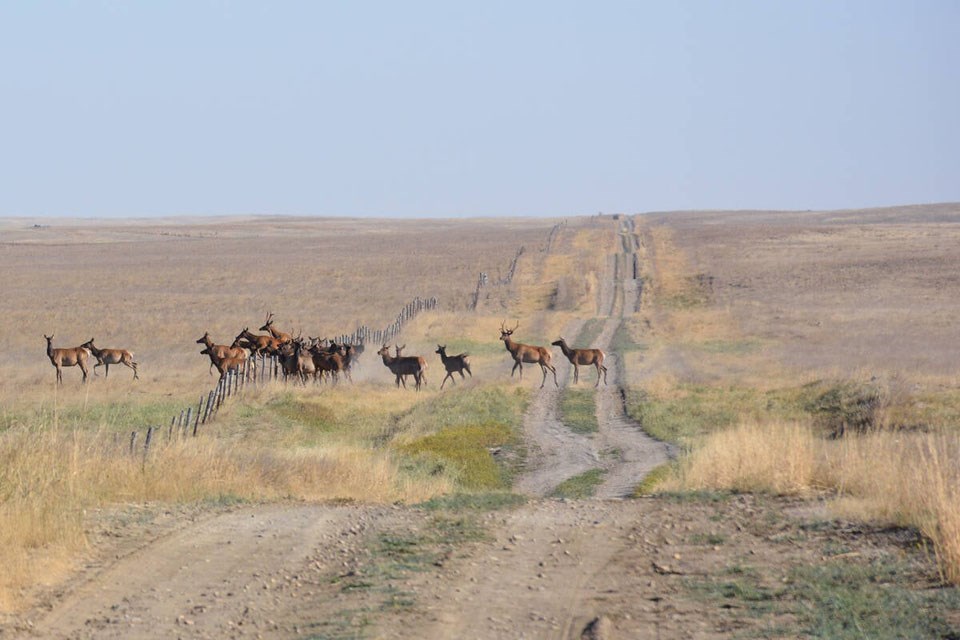REGINA — Large elk herds have become a big problem for farmers, but a plan to tackle the issue has raised ethical concerns.
The province recently allowed a spring hunt in wildlife management zone 39, which is west of Yorkton to near Foam Lake and north to Kelvington, and the rural municipalities of Stanley and Leask. Licences were available for antlerless elk from March 10-31.
However, the Saskatchewan Wildlife Federation opposed the move, as did farmers who said shooting pregnant females is unethical.
The SWF posted on social media that none of its habitat trust lands would be open for the hunt.
Executive director Darrell Crabbe said the board made the decision “based on the ethical concerns of harvesting cow elk who are just a few weeks away from calving.”
The SWF supports compensating producers who lose feed to elk herds and said hunting opportunities next fall should be implemented in accordance with the game management plan.
Some landowners in the regions said they would also close their lands to the hunt, with one saying it’s cruel to kill a pregnant cow and then her calf, too.
Still, the licences were sold out.
Animals taken in Stanley or WMZ 39 are subject to mandatory head submission for bovine tuberculosis testing and must be submitted by March 31, the government said.
In the RM of Leask, hunters are asked to submit samples for chronic wasting disease testing, although it is not mandatory.
Jill Lowe, a councillor from the RM of Wawken in southeastern Saskatchewan, called for an immediate emergency elk management policy during the Saskatchewan Association of Rural Municipalities convention earlier this month. The RM borders Moose Mountain Provincial Park.
“Our current strategy of providing additional hunting tags as well as earlier and longer seasons has not been effective at easing the population growth,” she said.
Lowe said one of the herds in the area includes at least 150 elk. Farmers are losing a lot of feed but also have concerns about biosecurity, she said.
Bovine TB has been detected in east central Saskatchewan twice since 2023 and the strains are new. The Canadian Food Inspection Agency continues to investigate.
Lowe said the easiest and most effective solution is to make licences available to those who are most affected and to target only the problematic animals.
Agriculture minister Daryl Harrison and premier Scott Moe reminded farmers to contact Sask. Crop Insurance if they have experienced elk damage. The wildlife damage compensation program is available to all landowners, regardless of whether they have insurance.
SARM delegates have raised concerns about elk populations for several years. According to the environment ministry the opportunities to hunt elk are available through the new antlerless draw season in WMZ 38, increased quota in select zones and extended antlerless draw season dates in the grassland and parkland areas.
It said elk numbers are declining in the northeast.
Recent severe winters have hurt both white-tailed and mule deer populations, and hunting seasons were reduced. Pronghorn populations grew over the last 10 years but dropped significantly last year, and the number of licences available was cut.
Moose populations are declining in management zones in the forest.
“This decline is consistent across Western Canada with predation, overharvest, increased access and health-related factors as leading causes,” the ministry said on its website.
The University of Saskatchewan has put radio collars on 65 moose in the eastern forest to learn what affects survival and habitation selection.
Meanwhile, Animal Justice has written to the government to oppose the spring hunt, saying it violates the Animal Protection Act because it causes animals undue stress.
Contact [email protected]
About the author
Related Coverage




